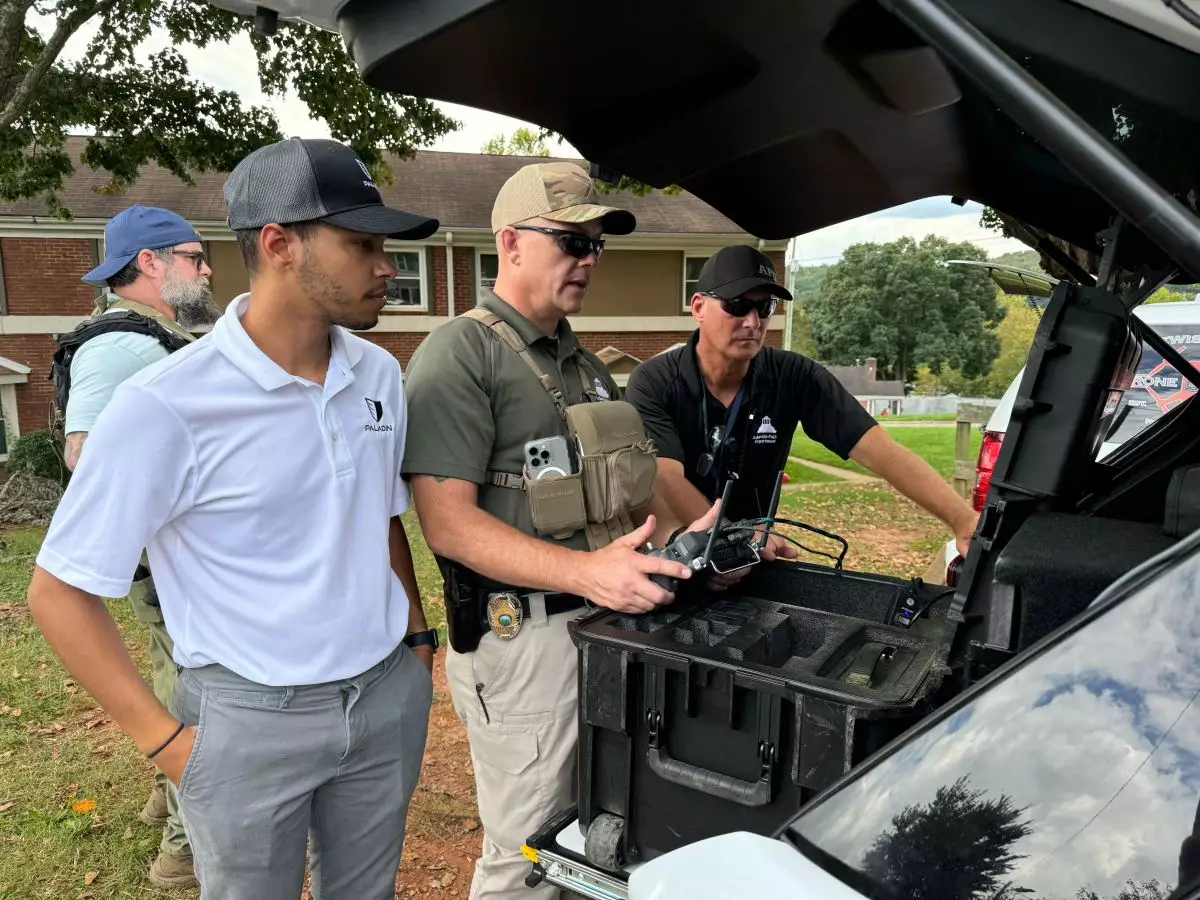In a world where natural disasters can strike at any moment, the integration of technology into emergency response systems has become a pressing necessity. The tale of Hurricane Helene’s impact on Asheville, North Carolina, exemplifies this demand. Responding swiftly to these challenges, Paladin—a public safety drone startup—took action to aid local authorities during a critical time. The startup’s innovative approach showcases how technology can bridge gaps in traditional emergency response systems, providing a clearer view of crises and expediting support for those in need.
Paladin’s operational framework is designed to redefine how we approach emergency calls. By deploying drones within a mere 90 seconds post-dispatch, the system offers immediate insight into a developing situation. This is pivotal, as it allows emergency services to assess the scene effectively before sending ground units, which are often hampered by adverse conditions like blocked roads or communication outages. With the capability to operate remotely from its headquarters in Houston, Paladin demonstrates how centralized technology can deliver localized, impactful results even in the face of chaos.
The personal roots of Paladin’s mission stem from founder Divy Shrivastava’s past experiences with delayed emergency responses, highlighting a universal truth: response times matter. When seconds count, the ability to visualize an incident through real-time drone footage can be the difference between life and death. This concept resonates particularly in rural areas where resources may be limited, thus justifying the demand for technology-enabled solutions.
Paladin’s growth trajectory, marked by significant funding rounds—such as the recent $5.2 million seed investment led by Gradient, among others—demonstrates confidence in its technology and the urgency for enhanced public safety solutions. The investment is earmarked not only for technological upgrades but also to amplify the company’s visibility among public safety departments. As more agencies recognize the benefits of drone technology, the possibility of widespread adoption comes into focus, promising an era where drone assistance could become commonplace in emergency response protocols.
The software’s new features, including on-site supply delivery—be it Narcan, life jackets, or other essentials—signify a transformative leap in operational capabilities for emergency responders. Such advancements underline the pivotal role that innovative startups like Paladin are playing in reshaping the public safety landscape.
Despite the clear benefits, the introduction of drones within law enforcement raises ethical concerns related to surveillance and privacy. Shrivastava acknowledges these apprehensions and emphasizes that Paladin’s drones are strictly reactive; they engage only in response to 911 calls, eschewing any form of unsolicited surveillance. This specificity is paramount to maintaining public trust, especially amidst concerns surrounding the militarization of police forces.
By prioritizing compliance with federal regulations and adhering to privacy standards, Paladin is actively working to mitigate fears surrounding drone deployment in public safety. Such transparency is crucial as communities grapple with the evolving relationship between technology and civil liberties.
Paladin isn’t alone in its mission to innovate emergency response. Competitors like Prepared are also entering the arena with similar objectives—utilizing video technology to enhance the situational awareness of 911 dispatchers. As interest in digitizing and modernizing public safety grows, the influx of entrepreneurial efforts in this space not only promises competition but also catalyzes collaborative advancements. Each innovation builds on the last, propelling the industry towards a future enriched by technology.
While many small towns lack robust resources, the implementation of drone technology can enhance operational efficiency significantly. A notable statistic shared by Shrivastava indicates that drone assistance can clear up to 25% of frivolous calls. This unnecessary strain on law enforcement can hinder their ability to respond to genuine emergencies, emphasizing the need for more effective resource management.
As we look ahead, it becomes clear that the landscape of emergency response is undergoing a fundamental shift. Drones are not merely gadgets; they represent a critical advancement in providing timely assistance to victims during crises. By fostering partnerships with local municipalities and refining their technological capabilities, startups like Paladin are crucial to developing a more efficient and responsive public safety framework.
The future promises to be one where emergencies can be managed with unprecedented precision, thanks to the marriage of drone technology and data-driven decision-making. As demand grows, so too does the responsibility to ensure that this innovation remains ethical and beneficial, enhancing the quality of life in communities across the nation. The story of Paladin acts as a beacon of transformative potential within the public safety sector, highlighting that, when executed thoughtfully, technological integration can indeed save lives.

